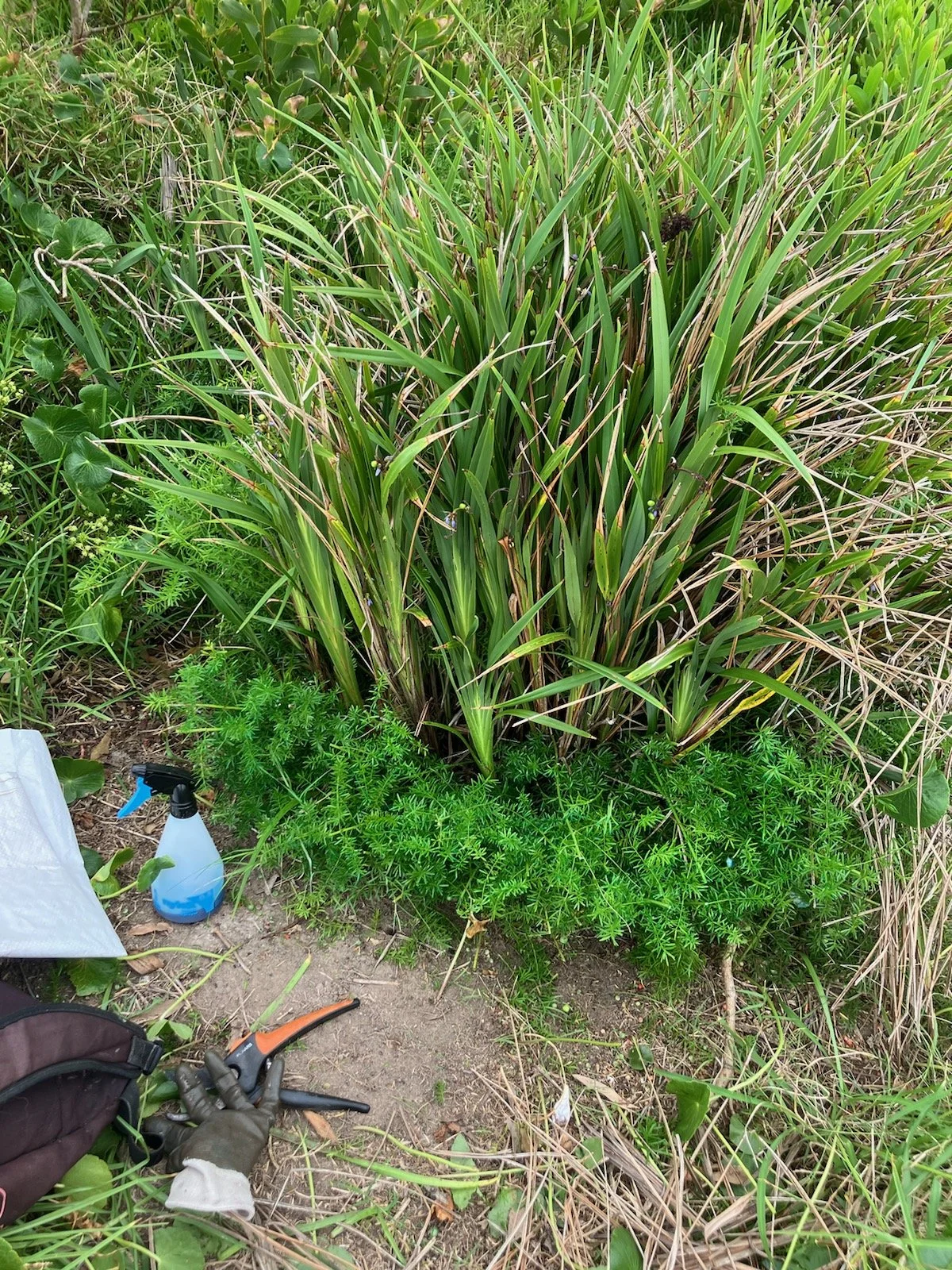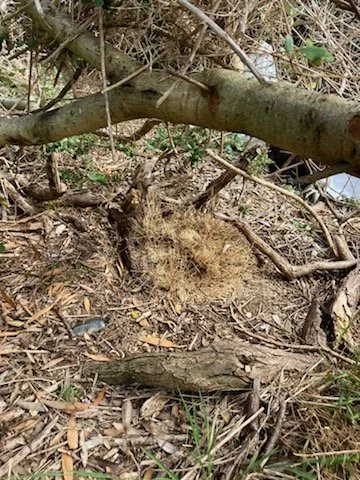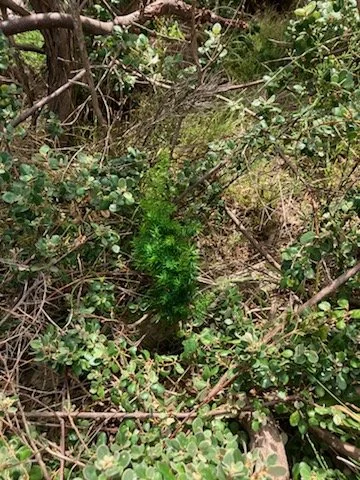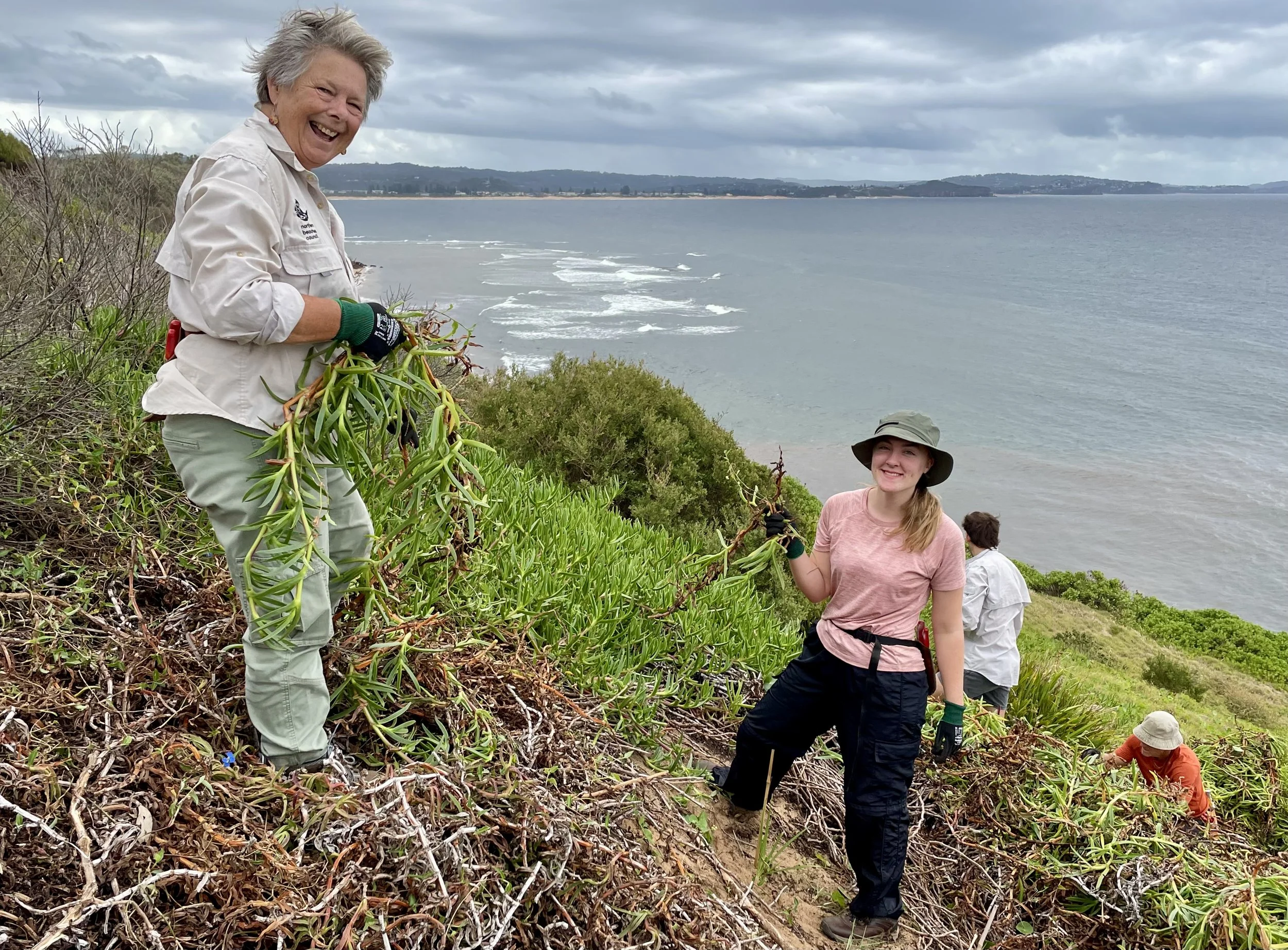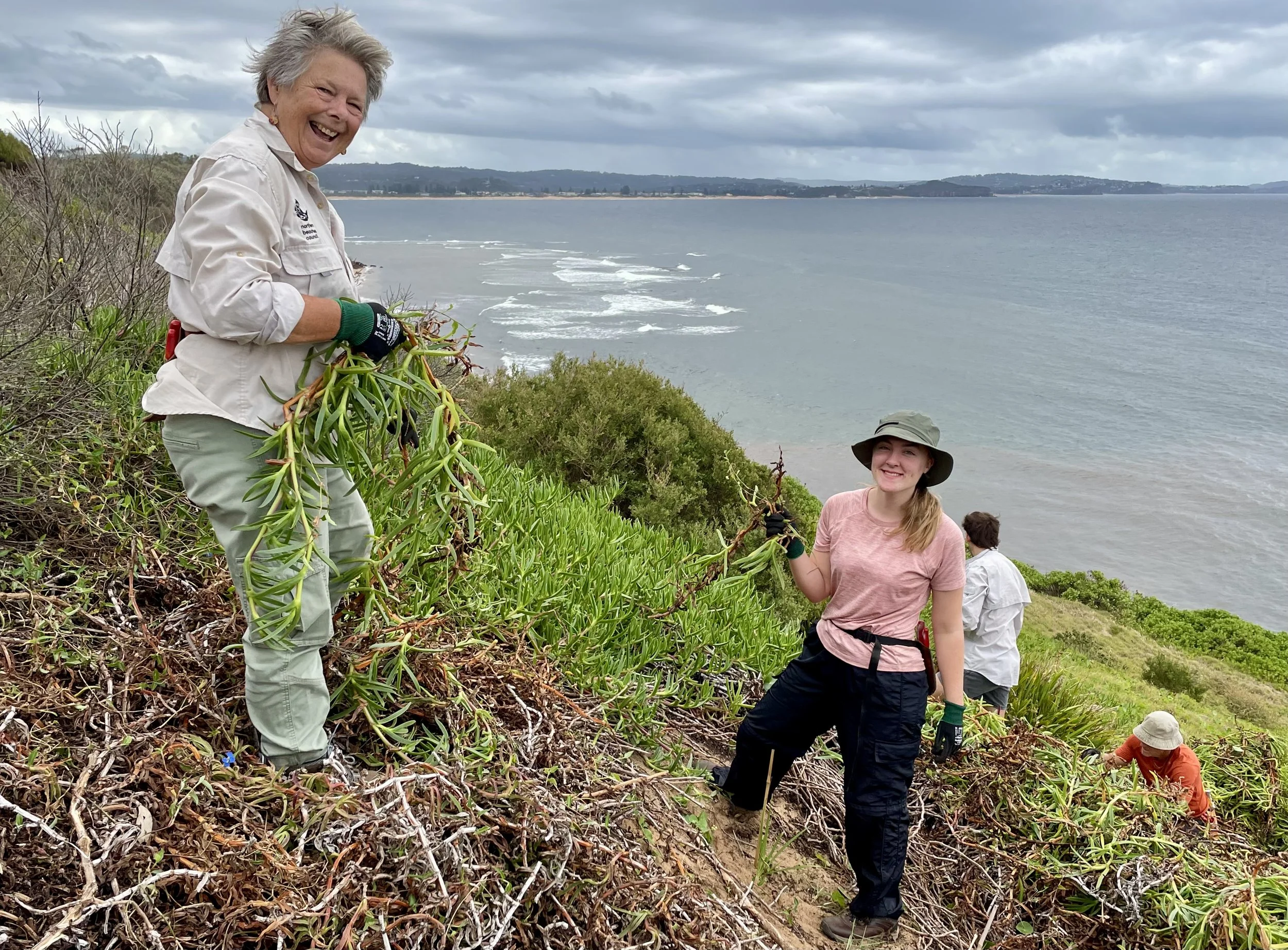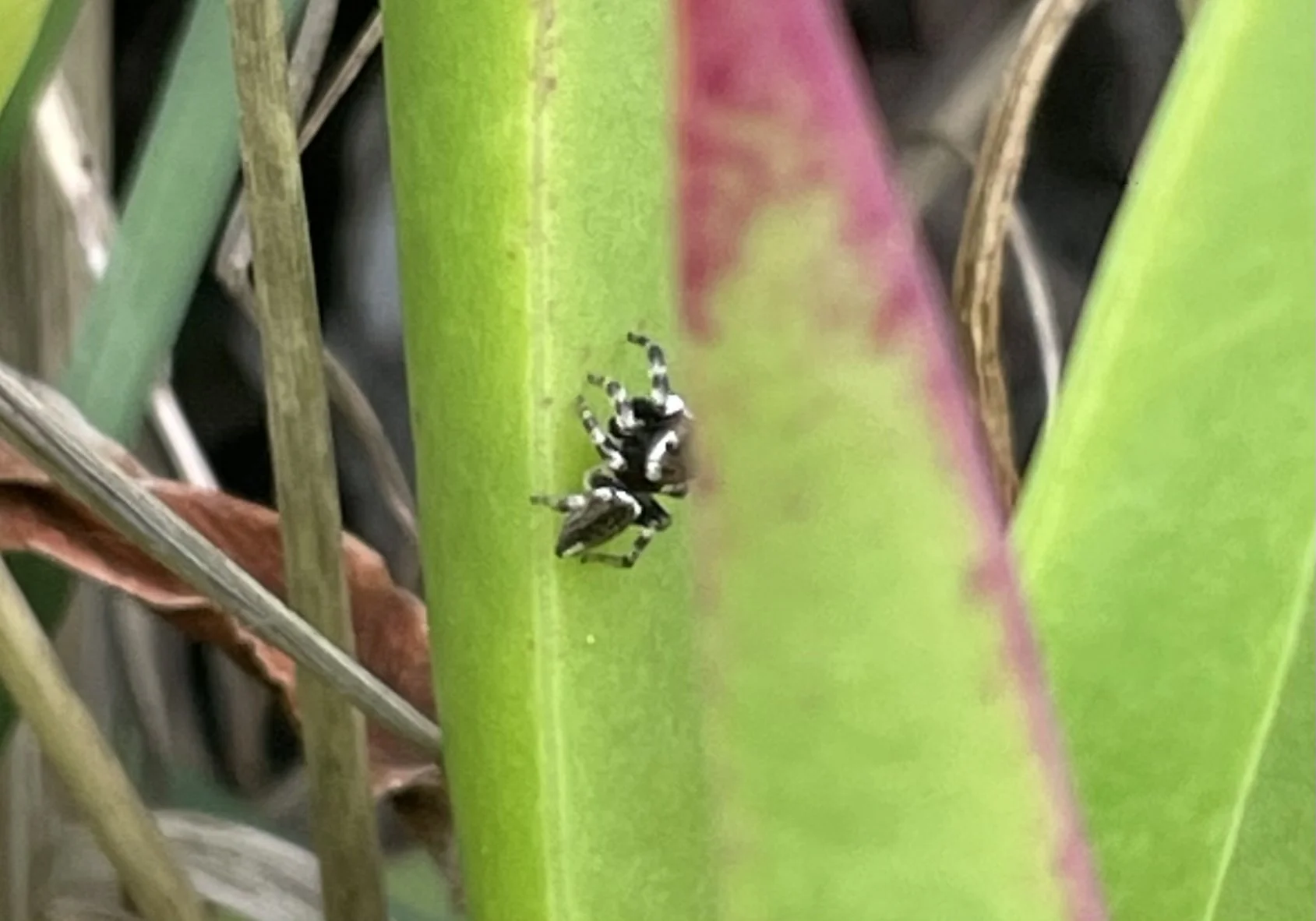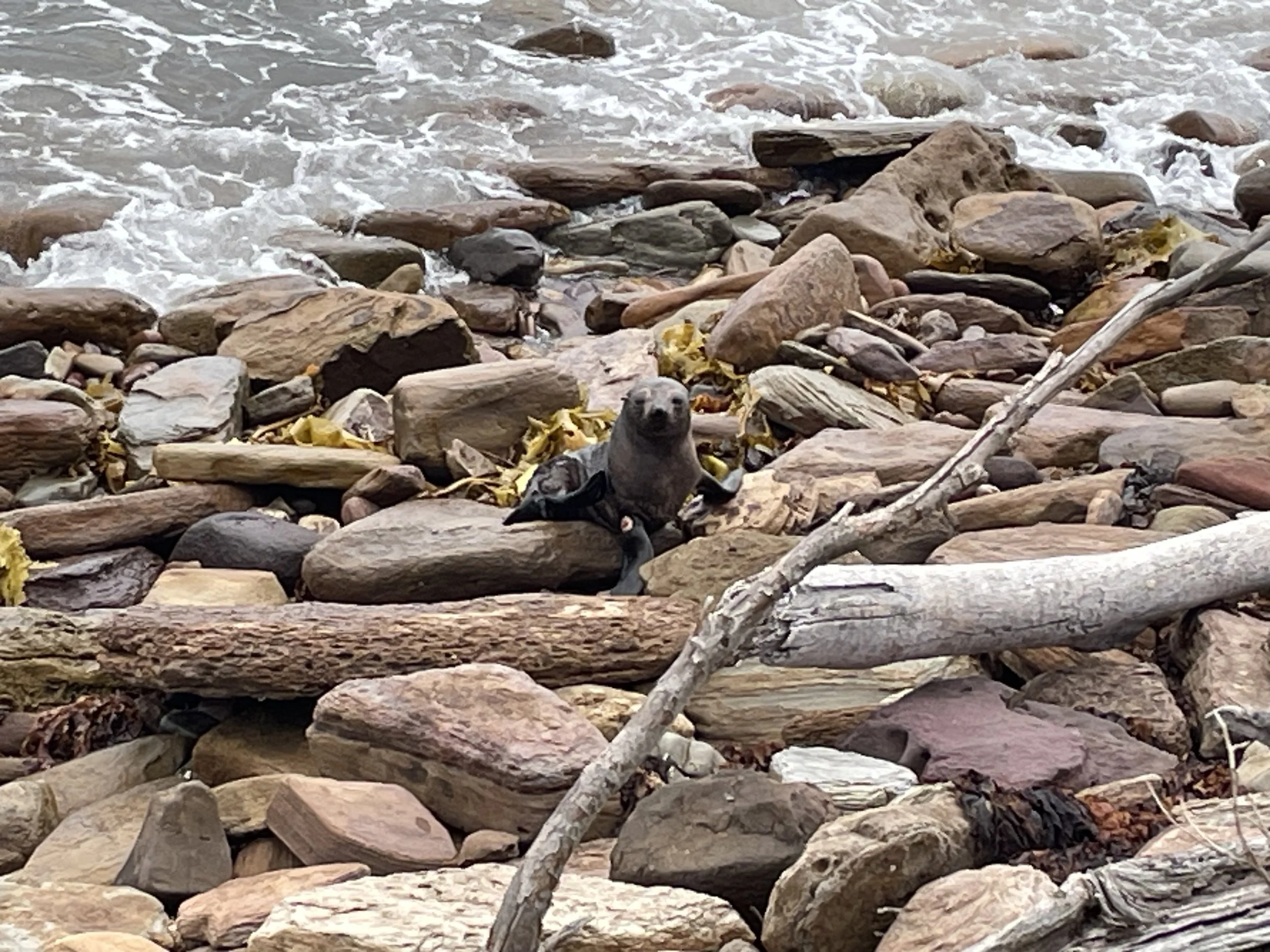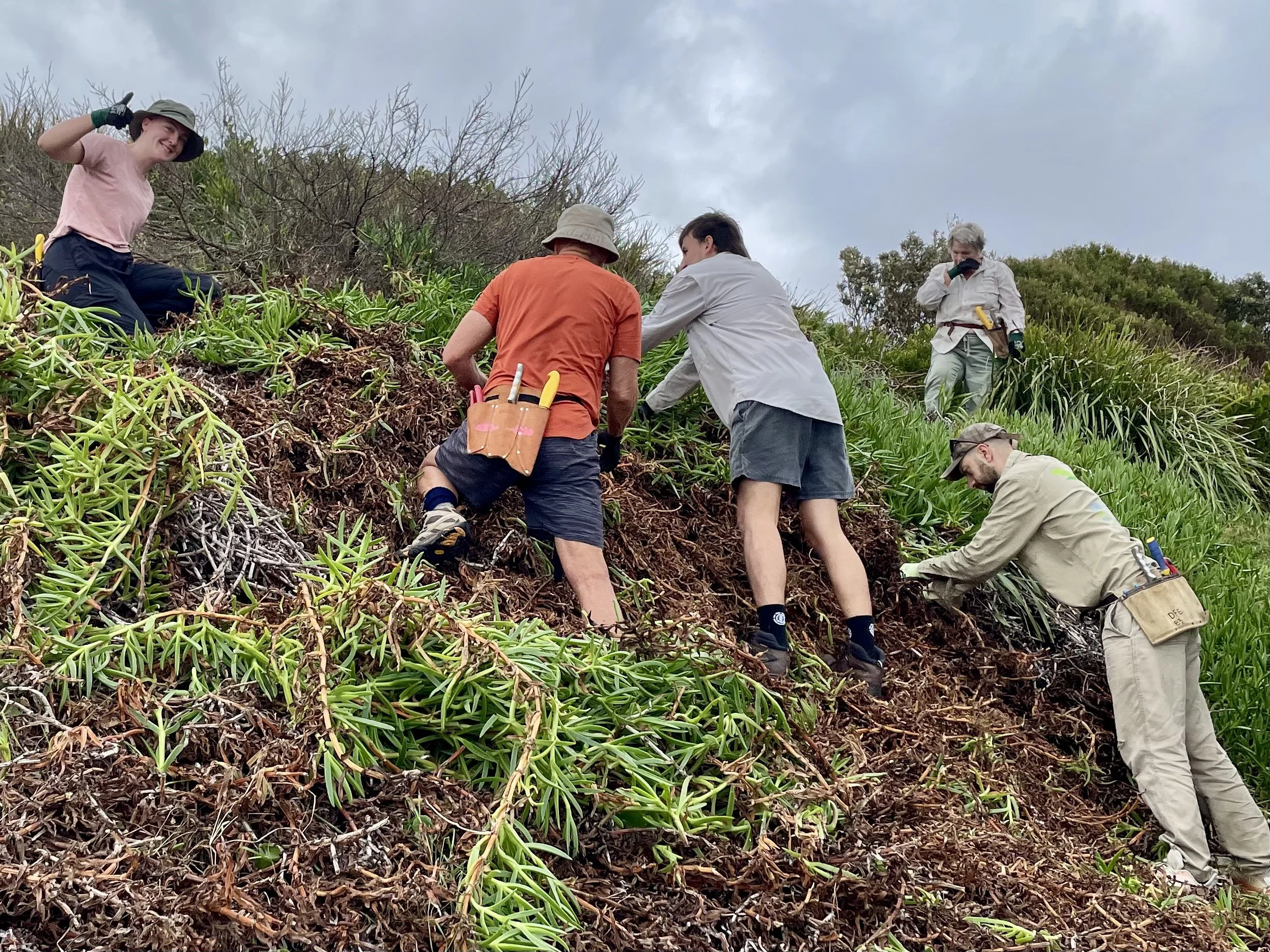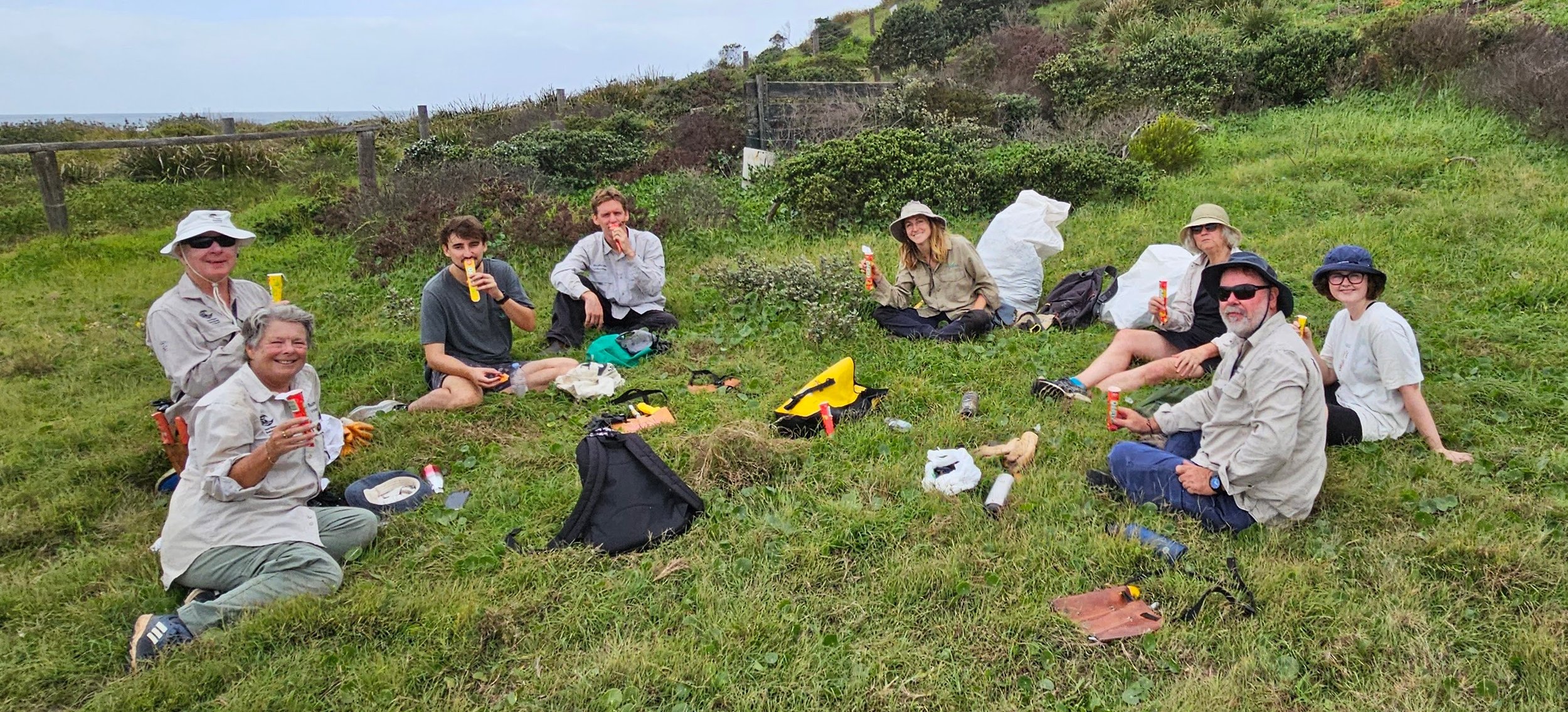
Blog
Reefcare Day Report: A day of planting new seedlings
On a warm but overcast morning, twelve keen volunteers gathered at the carpark, with 50 seedlings to set free into the wilds of Long Reef …
Stephanie and Karina prepare the ground to plant some tube stock
On a warm but overcast morning, twelve keen volunteers gathered at the Long Reef carpark. With fifty seedlings, lots of tools, bottles of water and twelve people, it took some organising to work out how to best target the two planting areas we wanted to tackle.
Once out onto the site, Lisa, Stefanie, Karina, Bec and Elias planted seedlings around the Lomandra longifolia on the northern dune, before joining Brad and Gen on the high western slope. Here, they planted the balance of the tube stock around the gully and the western side of cleared Bitou. The sandy soils here required them to build terraces with old bitou branches. The ground preparations are vital to encourage any rainfall to stay in the tube stock area.
Correa alba, taken out of the tube and ready for planting. We have never seen wombats on our site but they would like these. Photo by Stephanie.
Here is hoping we have some rain in the next three to four days; otherwise, Des and Lisa will be struggling down the slopes with 8+ litres of water each, to help our newly planted seedlings get established in the sandy soil.
While Brad and Gen were planting the stock, they also collected some of the lush and lovely Commelina cyanea, to transplant around the more western part of the site. The extra ground cover should help prevent erosion of the sandy soil, until the newly planted natives get established.
Julie’s focus was the top area below the whale sculpture where the asparagus fern is growing through the thick grass, dianella clumps and acacia/ correa scrub. Where the asparagus fern is enmeshed in and ringing the dianella, she removed seed, pruned it back and then sprayed with blue dyed glyphosate.
Julie sprays glyphosate on the asparagus fern that has encircled the daniella plant. We usually do not like to use glyphosate, but in this case, removing the plants manually would cause major damage to the daniella. Photo be Julie.
Dead asparagus fern. Photo by Julie
This type of work in ongoing. Last month Julie re-sprayed two large crowns of asparagus fern which had regrown thickly. This time, both crowns are dead, but will need to be checked again next month. Clearly, they are resilient !!
Julie is aiming to find the best method of asparagus fern eradication which requires low energy by volunteers, but has high impact on the plant.
Bright green asparagus fern. Photo by Julie.
Julie advises that removal of the seeds by running a gloved hand along the stem means less weight to carry off the site. Making a 'ponytail' bunch of the Asparagus Fern stems means spraying is focussed and not wasted.
Canavalia Rosea mature pod with a few seed pods still in situ. It is great to watch the lifecycle of these plants, from pink flowers, to big green seed pods and now ready to set seed again. Photo by Stefanie.
In addition to planting the seedlings, we still needed to keep the weeds at bay, so Julie, Merrilyn and Des worked on asparagus fern and Bitou around the site. This is a constant source of work as there are hundreds of these sprouting up, especially with the asparagus fern seeds being dropped by birds. Once Alex moved to the high slop area, Mary who has to be careful of her ankle worked on asparagus fern.
Morning tea below the old bundles of pigs face, with a view over the ocean. Photo by Lisa.
Alex and Mary worked on turkey rhubarb removal. Alex found more sites of turkey rhubarb to eradicate, which was very upsetting news as we thought we just had a few sites to monitor. From past experience, we know that any infested area needs to be monitored for months to years as dormant seedlings suddenly burst into life. We suspect that the seeds are being blown in from the infested Long Reef dunes, south of our site.
After the planting was finished many of the group worked on ridding the gully of the non-native pigs face. This weed would otherwise smother our earlier plantings. With Brad, Gen, Lisa, Elias, Stefanie, Karina, Alex, Bec and Denise working together, they managed to clear a good-size area. We will need a follow up next month, but I surmise it won’t take long, and we can move onto the eastern slope of the gully, to join it up with the larger cleared area from last year.
Elias shows how to build terraces on the steep sandy slope, before planting Westringia fruticosa tube stock. Photo by Stephanie.
We bundled the non-native pigs face into piles. These flatten down as they dry out, providing good ground cover on the steep sandy slopes. Photo by Lisa.
In the afternoon, as we left the site and passed the area we worked on last year, we were thrilled to see the plantings had thrived. The space looked vibrant and healthy. We may be able to add more plants here, perhaps a task for next month.
Text by Lisa.
Reefcare Day Report: A big turnout for the start of 2025!
What a fabulous start to 2025 with thirteen Reefcare volunteers turning up! Once again it was exciting to see so much wildlife as we worked …
It is all smiles as Lisa and Stefanie clear Pigs face on the upper slopes near the Gully.
What a fabulous start to 2025 with thirteen Reefcare volunteers turning up! It was a mild, cloudy 20 degree day, so perfect for working on the open terrain. After signing on and allocating equipment, we took some photos of Merrilyn and Des, each with a plant donated by the Northern Beaches Council (NBC) for their attendance – follow the link below for more details and photos.
Once again it was exciting to see so much wildlife as we worked. A nankeen kestrel hovered over us as we weeded, looking for prey, and an osprey soared over the slopes, a small fish in its talons for morning tea. On the ground, Brad found a baby eastern blue tongue (Tiliqua scincoides) and soon after, Des found another one. It felt so rewarding to see that this native animal is breeding on our site, the native vegetation providing good cover from the weather and predators.
we found another maroubra snail and Kristie found a spider, not seen at Long Reef before, which looked like it was from the Salticidae family. As the Long Reef area returns to native vegetation the number of insects and invertebrates is increasing. Lisa recalls seeing almost no insects when she started clearing the invasive bitou bush, twenty-seven years ago!
This jumping spider: Maratus scutulatus (white garland house hopper) was seen hunting in the foliage at Long Reef. Photos and video by Kriste King.
We were having a relaxing morning tea on the upper slopes when Stefanie spotted an Australian fur seal (Arctocephalus pusillus doriferus) near shore. It came up onto the beach where Brad and Kristie saw that it was hurt, so they called the sea life rescue organisation: ORRCA. They arrived at about 1 pm and set up signs to warn people of its presence. They had been monitoring it since yesterday. NPWS set up a 40m exclusion zone so it can rest while recuperating from its injuries. The Northern Beaches Council also posted some photos of it on their Facebook page and website:
Seals occasionally come ashore at Long Reef. This one was injured so we called the sea life rescue organization: ORRCA.
After morning tea, Des spent his time scouring the site for small bitou seedlings, asparagus fern, and other weeds to try and maintain our better areas as best we can. He was backed up by Merrilyn, who focussed on Gladiolus caryophyllaceous, as well as asparagus fern and bitou seedings which proliferate all along the north-facing slope of our site. Julie spent all her time on asparagus fern, as she had done for the last half of 2024. This weed is severely problematic on our site. There are huge plants along the fence line, in the public areas around our site and in the dunes just south of our site. Birds pick up the seeds elsewhere depositing them all over Long Reef.
Alex and Leila continued to work on the turkey rhubarb (Acetosa sagittata) that had infiltrated the acacia, and found dozens of good-sized bulbs. This area has been a focus for the past four working days, and still needs more work. They then checked the nest and another turkey rhubarb source in the Westringina on the flat, before heading back up hill and clearing the rest of the pigs face (Carpobrotus sp) near the fence line.
Elias, Josh, Arthur, Lisa and Stefanie worked on the non-native pigs face and were really thrilled to finally cut through to the gully. In one area where they removed the pigs face they were absolutely delighted to find a large patch of healthy kangaroo grass (Themeda Triandra). They also found a rather freshly eaten large blue tongue. The smell of it encouraged us to work faster and move further west!
Stefanie, Arthur, Josh, Lisa and Elias (our Dragonfly supervisor), clearing pigs face on the upper slopes
Mary is still getting over a twisted ankle and was unable to work on the steep western slope, so she kept to the eastern dunes area, clearing kikuyu on the southern edge of our demarcation. This line was established in our December working day, to protect our beautiful kangaroo grass.
Brad and Gen with some help from Des continued to remove bitou from the western side of our site; as well as Brad and Des cutting a new pathway through the bitou to an area of huge asparagus ferns. It is a steep area involving climbing over roots so hard work for the boys.
It was a great start to 2025 and we are looking forward to our next working day on the 1st of March.
Text by Lisa Calder




